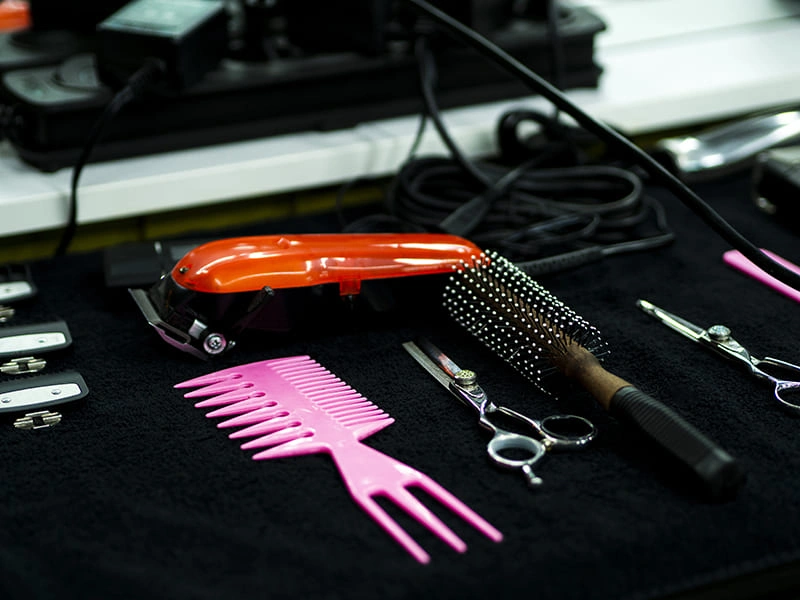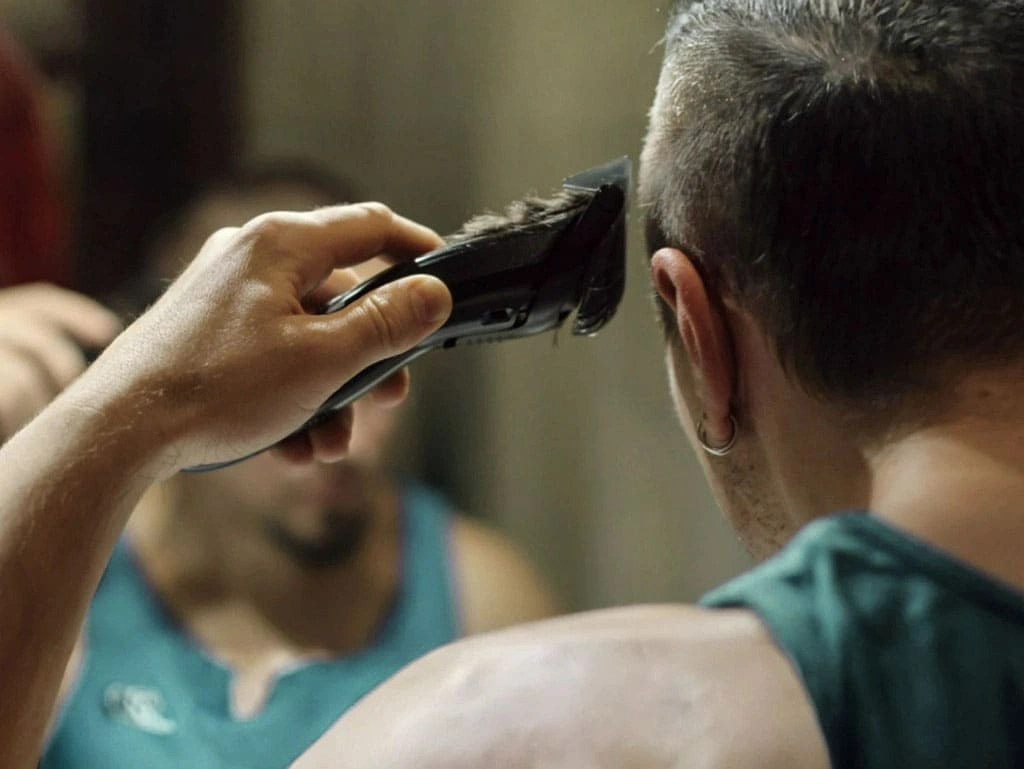Looking for how to cut your hair without regret at home? Regardless of whether you are undertaking a time and money-saving endeavour or a DIY project, the complexity of providing a haircut to yourself is easily achievable. This guide will ensure you can achieve every hairstyle you desire, from simple trims to layered cuts, and with a few attempts, you will be transformed into a hairdressing expert.
This article shall teach you the steps to follow for hair cutting in sequence, equipment that requires obtaining, and some of the most common pitfalls so you do not fall into those traps. By the time you are through with the article, you shall possess the skills to not only perform simple haircuts but also add complex exercises like layers, sharp side parts, and subtle fades.
Why Cutting Your Hair Is A Great Idea ?
Having effortlessly amazing hairstyles is incredibly useful in various aspects, but doing them on your own creates a different level of flexibility. Here are several reasons you’d want to try this:
Wedding yourself from added expenses: Barbers and salons are costly frequented areas; help yourself to save.
Convenience: Eliminating any inefficient use of time associated with out-of-town appointments.
Last-Minute Trims: Great for quick fixes before major events.
After considering the benefits, we can now proceed.
Setting Up Your Home Haircut Station.
Tools You’ll Need to Cut Hair Like a Pro.
To achieve a flawless haircut, it is essential to possess all of the necessary tools. Here is a checklist to guarantee that you have everything you need before starting:

• A Quality Pair of Scissors: Cutlery-grade scissors will not cut it, pun intended. Invest in professional-grade haircutting scissors. Dull blades cause degradation and fraying, resulting in uneven cuts.
Hair clippers or Men’s clippers: Adjustable clippers complete with guard attachments will give you professional results.
A 360-degree mirror: A pivotal tool for seeing every angle while working on the back of your head.
Comb and clips: Clip the sections around the head, use strong clips, and section using a fine comb.
Spray bottle: This is optional and only required for wet cuts.
Apron or Towel: To avoid hair getting on your clothes and minimizing the cleanup afterward, this can be used but is entirely optional.
A bathroom or a room with a good mirror will work best. A well-lit area is essential, preferably one with natural light. Organizing the tools within reach will make the process much smoother as well.
Step-by-Step Techniques for Cut Your Hair
‘How To’ Maintain Your Style With Ease.
To retain the desired style, refreshing it requires little work, whether cutting a few inches or layering over it. Follow these steps to cut your hair without regret and for effortless style.
- Ensure Hair is Dry And Clean. Trimming the hair when it is damp can lead to unintended curl in the hair, which retracts as it dries. For a trim, it is best to work with dry hair.
- Divide The Hair. Organizing the hair with clips or a comb helps manage the hair in a step-by-step approach. One section at a time makes it possible to achieve the style one step at a time.
- Start From the Top. Work on the bottom layer and work your way up and out. Begin with small sections for the final touches and alter tissue, polish, and trim until you feel satisfied with the hair. For precision cuts, do the slicing using the scissors and your finger.
- Give a Little Attention to the Hair Below the Scalp. Using the comb to cut the hair gets the hair to fall over and shapes the tips and layers it into whatever shape set. Apply this technique by picking a hair and, although not completely pulling out, slide a comb down the parts where notch cuts will be defined every inch.
- Subtle Cuts Can Make a Big Change. One of the cardinal rules of haircutting is it is better to trim off less hair than to fix a trim that ends up taking too much off.
Cutting Men’s Hair Without Regret for Beginners
For some who are still wondering how to do hair grooming for men, here is a very rudimentary tip to get started with:

- Choose the Guard You Wish to Put On
If unsure, start off with a bigger clipper guard, as this would stop you from cutting below acceptable levels until you get used to the trimmer.
- Start Tapering the Neck area.
Beneath it, progress in a constant upwardwards movement to the top, trying to form a precise outline to the strcuk formula as you go along: strokes have to be both together and synchronized to achieve the desired grade cut.
- Back and side sculpting will also use different guard lengths for softer fades.
- Perfect the Side Part
If you’re going for a cutting hair side part, use scissors to trim around the part for precision. Comb and style your hair to check for accuracy.
- Check Your Rear View
Use a 360 mirror to evaluate the back of your head.
How to Cut Your Hair in Layers
For anyone looking to try a layered style, it’s easier than you may think to cut your hair without regret . Follow these simple steps:
- Start With Dampened Hair
Use a warm water spray bottle to mist your hair for controlled and accurate sectioning.
- Create a Ponytail
Flip your hair forward and gather it loosely at the front (toward your forehead). Snip the end of the ponytail for softer, graduated layers.
- Layer in Sections
For a more structured style, section your hair horizontally and work layer by layer. Trim longer pieces first, then blend to achieve a seamless finish.
- Shape the Frame
Add face-framing layers by carefully trimming around the front strands.
Pro Tips to Avoid Haircut Catastrophes
- Work Slowly
Patience is key. Rushing can lead to uneven cuts.
- Use the Right Lighting
Poor lighting can result in missed spots or uneven sections.
- Watch Tutorials
Check out online tutorials for visual guides on complicated cuts.
- Start Small
Trim just a little until you’re confident enough to take bigger steps.
Problems and How to Fix Them
Have you got results that are unequal or accidentally did yourself a disservice by chopping it shorter than intended? Don’t rush.
- To fix rough edges, lightly and gradually buffer harsh edges.
- If the intention backfires, mask the careless cutting error behind.
Hair styling may help disguise miscalculations during mane formation.
Hair eventually grows back, allowing one to experiment without consequence.
Why a 360 Mirror Is Your Best Ally
A 360 Mirror is an absolute must-have if you are keen on learning how to cut your hair. This tool enables you to view yourself from every possible angle, adding a lot of confidence when trying to see less visible areas, such as the back of your head.
Practice Makes Perfect
As with any other skill, getting better at cutting hair will take some time and effort. Try small trims first, and then make your way towards more advanced cuts. With practice comes perfection.
Get Creative with Your Hair Design
Once basic cuts have been mastered, try hair designs such as fades, lines, or intricate patterns that can add something special to groomed looks.
Your DIY Journey Begins Now
Cut your hair without regret is might be seem overwhelming, but the right setup, tools, and techniques can make you feel very confident in no time. Whether it’s a simple trim or something more intricate like layers and fades, the difference is always in the prep and a bit of patience.
Now, it’s time to go for it. Get your scissors, clippers, and mirror, and begin your haircutting journey right today.
Get ready to shine – discover our latest glow-up secrets now!
Frequently Asked Questions
How often do I need to trim my hair if I am doing it myself?
It all depends on your haircut and the rate at which your hair grows. Doing a trim every 4 to 6 weeks will help keep its shape and make it look tidy.
What do I need to prepare when I want to cut my hair?
You will require a set of hairstylist scissors, a comb and clippers, a handheld mirror, and some clips or hair ties to make sections.
How do I do a proper self-haircut without making blunders?
To achieve the best effects, make sure that in the start, you remove a lesser amount and then blend the edges. More advanced styles require the correct lighting, mirrors, and detailed guides.
Can I put layers on my hair on my own?
Absolutely! Just be cautious. Follow the correct layering methods for your hair type, and take your time to avoid errors. Lots of tutorials are easy to follow and provide step-by-step instructions.
What can I do now?
Do not panic yet. In many cases, the issue can be fixed through blending or simply trimming the hair down a bit. If the problem seems to be more than one can handle, seek the help of a hair care professional.

